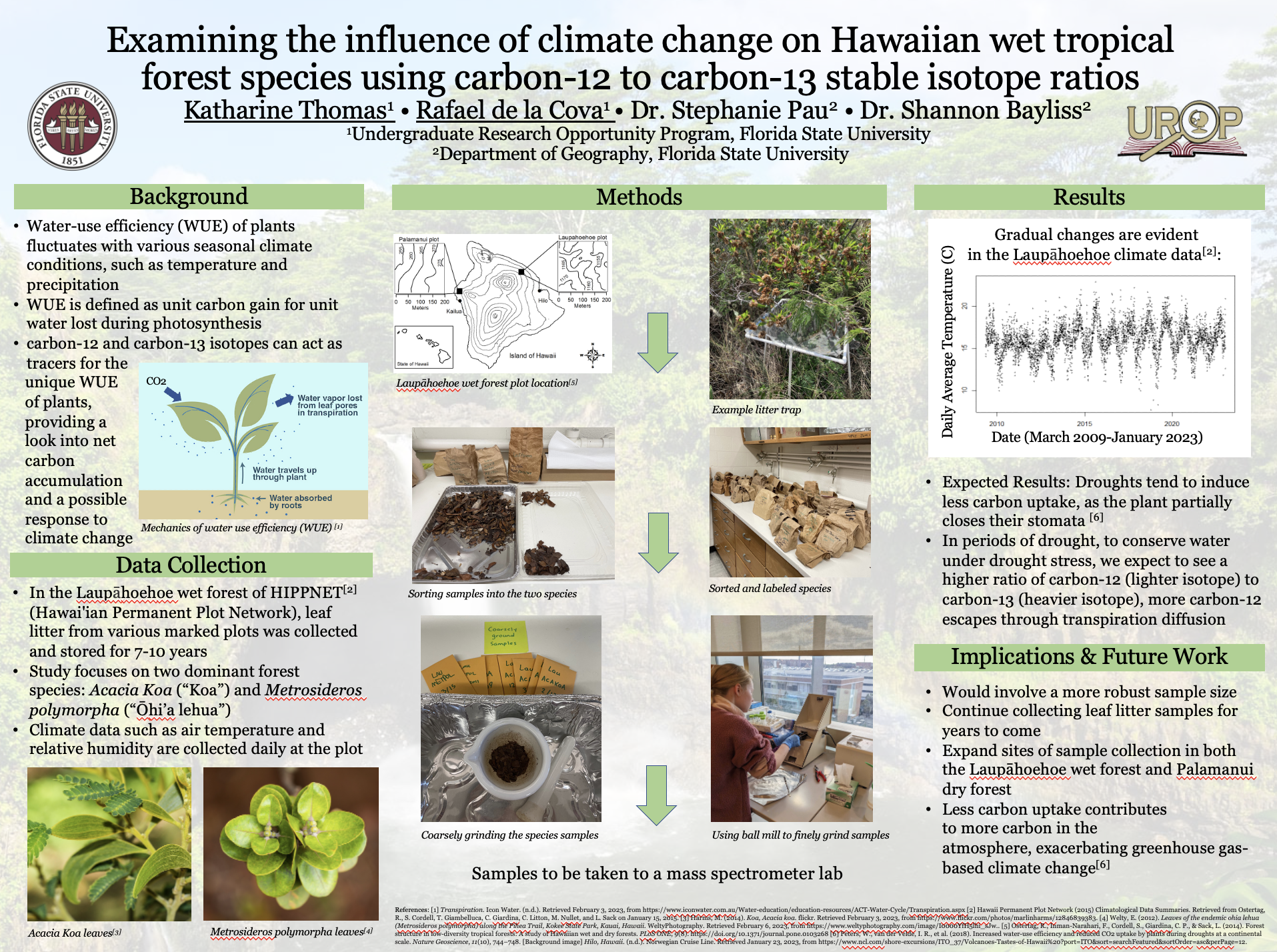Research Symposium
23rd annual Undergraduate Research Symposium, April 6, 2023
Katharine Thomas Poster Session 3: 2:45 pm - 3:45 pm/ Poster #368
BIO
Katharine is a sophomore from Glastonbury, Connecticut majoring in the environmental sciences with the career goal of being a dentist. She grew up going camping with her family during nearly every school break, cultivating a lifelong fascination with the environment around us. She saw UROP as being an incredible opportunity to explore this passion while still in an undergraduate program, before dental studies take precedence. Lush, dewy greenery has always been Katharine's favorite environmental domain, and this research project traverses the beauty and complexity of the Laupāhoehoe Hawai'ian wet tropical rainforest. She looks forward to following her fascination with the sciences through research at FSU and beyond.
Examining the influence of climate change on Hawaiian wet tropical forest species using carbon-12 to carbon-13 stable isotope ratios
Authors: Katharine Thomas, Stephanie PauStudent Major: Environmental Science and Policy
Mentor: Stephanie Pau
Mentor's Department: Department of Geography Mentor's College: College of Social Sciences and Public Policy Co-Presenters: Rafael de la Cova
Abstract
Climate change affects all aspects of the global environment including the amount of water available to plants in tropical forests, particularly those located in the dry and wet tropical forests of Hawai’i. Captured and examined over time, the stable carbon isotopes in plant litter, carbon-12 and carbon-13, can act as tracers for the unique water-use efficiency of plants in given climate conditions. Water-use efficiency of plants relates to entire ecosystem processes such as net carbon accumulation through photosynthesis. These observations may provide a clearer look into the response of tropical forests to climate change. From 7-10 years of leaf litter collections from the wet forest at Laupahoehoe, we sorted the species Acacia Koa (“Koa”) and Metrosideros polymorpha (“Ohi’a lehua”), while from the dry forest at Palamanui, we sorted the species Dodonaea viscosa (“A’ali’i”), Psydrax odorata (“Alahe’e”), and Diospyros sandwicensis (“Lama”). After sorting by species, we ground the samples into a homogenous fine-grained powder and dried them to ensure all extra water weight was dissipated. A mass spectrometer was used to measure the carbon stable isotope concentrations. The records of these isotopic ratios allow us to track the plant's water-use efficiency over time and how water-use efficiency fluctuates with various climate conditions that the plants were experiencing seasonally, including temperature and precipitation. In time, we expect species adapted to dry conditions, from the dry forest, to have higher water use efficiencies regardless of climate fluctuations over the allotted time period.
Keywords: Hawaii, leaves, climate change, isotope, forest


